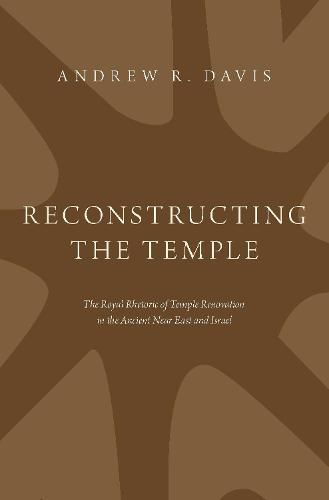Readings Newsletter
Become a Readings Member to make your shopping experience even easier.
Sign in or sign up for free!
You’re not far away from qualifying for FREE standard shipping within Australia
You’ve qualified for FREE standard shipping within Australia
The cart is loading…






This book examines temple renovation as a rhetorical topic within royal literature of the ancient Near East. Unlike newly founded temples, which were celebrated for their novelty, temple renovations were oriented toward the past. Kings took the opportunity to rehearse a selective history of the temple, evoking certain past traditions and omitting others. In this way, temple renovations were a kind of historiography. Andrew R. Davis demonstrates a pattern in the rhetoric of temple renovation texts: that kings in ancient Mesopotamia, Israel, Syria and Persia used temple renovation to correct, or at least distance themselves from, some turmoil of recent history and to associate their reigns with an earlier and more illustrious past. Davis draws on the royal literature of the seventh and sixth centuries BCE for main evidence of this rhetoric. Furthermore, he argues for reading the story of Jeroboam I’s placement of calves at Dan and Bethel (1 Kgs 12:25-33) as an eighth-century BCE account of temple renovation with a similar rhetoric. Concluding with further examples in the Hellenistic and Roman periods, Reconstructing the Temple demonstrates that the rhetoric of temple renovation was a distinct and longstanding topic in the ancient Near East.
$9.00 standard shipping within Australia
FREE standard shipping within Australia for orders over $100.00
Express & International shipping calculated at checkout
This book examines temple renovation as a rhetorical topic within royal literature of the ancient Near East. Unlike newly founded temples, which were celebrated for their novelty, temple renovations were oriented toward the past. Kings took the opportunity to rehearse a selective history of the temple, evoking certain past traditions and omitting others. In this way, temple renovations were a kind of historiography. Andrew R. Davis demonstrates a pattern in the rhetoric of temple renovation texts: that kings in ancient Mesopotamia, Israel, Syria and Persia used temple renovation to correct, or at least distance themselves from, some turmoil of recent history and to associate their reigns with an earlier and more illustrious past. Davis draws on the royal literature of the seventh and sixth centuries BCE for main evidence of this rhetoric. Furthermore, he argues for reading the story of Jeroboam I’s placement of calves at Dan and Bethel (1 Kgs 12:25-33) as an eighth-century BCE account of temple renovation with a similar rhetoric. Concluding with further examples in the Hellenistic and Roman periods, Reconstructing the Temple demonstrates that the rhetoric of temple renovation was a distinct and longstanding topic in the ancient Near East.